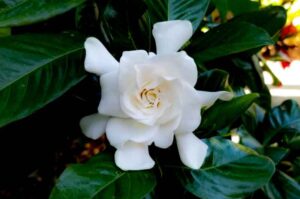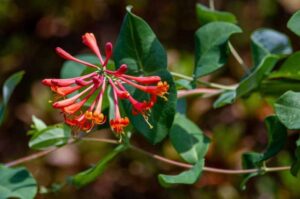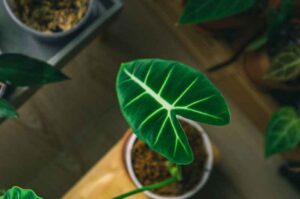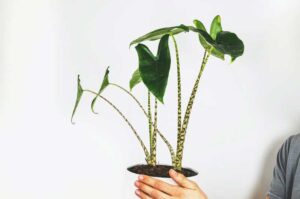Hoya leaves soft and wrinkled- Unwrapping the mystery
The beautiful flowers of the Hoya are a lovely addition to any home. This tropical plant is a South Indian native known as the wax and porcelain flowers. Hoyas can be cared for easily and last long, so they are a great houseplant worth considering.
Poor watering, pests, and temperature shock are all common causes of Hoya leaves curling or shriveling. A soft, wrinkly leaf indicates that a Hoya tree needs some attention.
Hoya is an evergreen plant that can grow well in rocky environments. Because of its thick, waxy leaves, it is an indoor tropical plant that requires little maintenance.
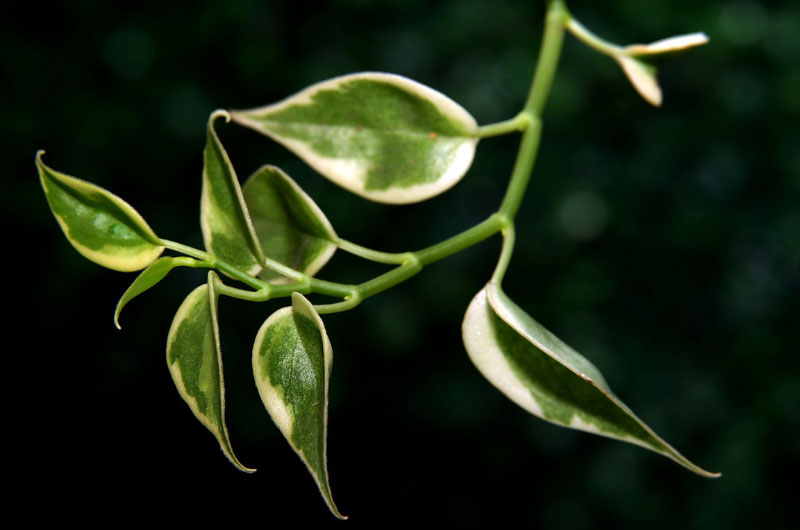
Hoya indoor plants are easy to care for and can be enjoyed for many years with very little maintenance. They are a good choice for their strong aromatic flowers and mild climate.
There are over 300 species of Hoya, each with its unique pattern and response to stress. Many factors can cause these issues. Let’s look at what your Hoya tree is telling us.
Hoyas can be pretty easy to care for. However, they can develop problems when there are several factors. Sometimes it is as simple as forgetting water; other times, it can be more complex, like varying temperatures and repotting.
There are many reasons why your Hoya plant could be unhappy, as you can see.
Our mission is to help you find a way to revive your Hoya plant.
This comprehensive guide will help you identify the causes of soft and wrinkled Hoya leaves. After identifying the root cause, we will guide you through the steps necessary to fix it.
8 Reasons That Cause Hoya Leaves Soft And Wrinkled
Here are the most common reasons that are making your Hoya leaves soft and wrinkled.
1. Humidity
Hoyas love a moist environment for their growth. This is because of their biological functions that require a humid environment. The leaf will dry out if there is not enough water in the air.
Although each variety prefers a specific humidity level, most require 60%. While some species require less humidity than others, 60% is a good starting point.
2. Underwatering Causes Leaves To Wrinkle.
If the Hoya leaves aren’t properly watered, they will turn brown and dry. Lack of water will result in loss of turgidity in the leaves, ultimately they dry up and start to wrinkle.
The leaves are hardy and dry. However, they also tend to remain crisp from the tips. Due to their curling properties, some growth can be stunted and stale.
3. Overwatering Causes Hoya Leaves To Become Soft
Hoya needs well-drained soils, which are kept moist but not standing water. Hoya’s thick, juicy leaves make it more drought-resistant. They don’t need to be kept hydrated constantly.
However, if there is a constant waterlogging condition, the root will start to rot, and they will be unable to provide adequate moisture to the leaves, as a result, the leaves became dry and wrinkled.
Even if you are using the right cultivar for Hoya, there is always the chance of your leaves becoming soft and brittle.
4. Inappropriate Potting Mix
A wrong potting mix might contribute to both overwatering and underwatering situations. For keeping an ideal water table near the root zone, a good potting mix is essential.
Hoyas can be picky. The proper growing medium is essential for them. The Hoya won’t thrive in a mixture that is too dry or drains for an extended time.
Much depends on the type of variety, just like many other things. Dry soil is not as detrimental to succulent Hoya, for example. The waxy-leaved varieties, however, really do benefit from some extra water retention.
5. Pests causing leaf problems
Hoya plants may be affected by many types of pests, including scales, mealy bugs, and mites. These sucking insects will suck the leaves of your Hoya plant, causing nutrient losses and drying the leaves. This can lead to shriveled leaves.
They could also be responsible for leaf curling. The leaves of your Hoya may curl up as they try to keep moisture from being eaten by pests.
If the leaves are covered in white fuzzy spots, brown spots, or webs, you may have a pest infestation. You will need to get rid of them as soon as possible.
You can use a quality Neem oil spray once a week to eliminate most pests. To prevent pests from spreading, spray only at night.
6. Temperature Stress
Hoya doesn’t like to stand in a cold environment. This group of plants mainly belongs to warm areas, including the subtropics in Australia and the hot, steamy jungles in the Philippines.
Although many habitats are available, they all share one characteristic: constant and mild temperatures. The coldest areas rarely dip below 50oF (10oC) and never stay that low for long.
Temperature-stressed Hoyas will begin to draw away moisture from their leaves. Frosted leaves can produce ice crystals which can lacerate tissue.
The leaf will try to remove the water as soon as possible. It can cause wrinkles on the leaf’s surface.
You can avoid it by keeping your Hoya hot. Keep your Hoya at 68-75oF (20-24oC). You can go over or under, but keeping them cozy and stable is better.
7. Hoya Transplant Shock
Hoyas are not happy to be transplanted often and prefer to remain potbound most of the time. When repotting a Hoya, you should expect some transplant shock, like leaves curling and falling off.
There isn’t much you can accomplish here, so you must wait it out and allow your Hoya to adjust to the new environment. You should also limit the number of pots you repot to avoid future problems.
8. Fungal Infections
Your Hoya plant’s leaves can get affected by fungal infections. We are referring to fungal leaf spots, which can be caused by airborne spores.
The symptom of this airborne fungus first appears as brown or black spots on the Hoya leaves. These spots are small and may not be obvious at first. But severe fungal infections can be very obvious as they spread throughout your plant.
Your Hoya may feel soft and spongy due to fungal infection. In extreme cases, the leaves can even fall off.
If you have an infected Hoya tree, it is essential to remove the plant from other indoor plants immediately. This fungus can spread quickly to other indoor plants because it is airborne.
To kill any remaining diseases, get rid of infected foliage and apply a fungicide. You should ensure that your plant gets the best possible care throughout treatment.
What Can you Do to prevent it?
Here are a few things you can do to prevent the soft and wrinkled Hoya leaves.
Get rid of the sick roots
Remove the Hoya from its pot, and trim any rotten roots or infected growth media. You can do this procedure best in a large, clean basin. It is safe and effective for releasing damaged roots without affecting healthy tissue.
Now it is time to put down fresh soil and a new pot. Hoya needs a thick medium with plenty of air and good flow.
Treatment using a fungicide
Your roots may be healthy even though you have sick leaves. This means that your Hoya is most likely to have succumbed to fungal disease.
Start by keeping the Hoya apart from other plants in your garden. You must protect your green darlings from fungal diseases that spread quickly through groups.
Apply a fungicide after that. Copper-based fungicides will kill most suspects, but you must use them cautiously. Make sure to read and follow all instructions.
Mix Fresh New Soil
You should use a part of high-quality potting soil and two perlites in your soil mix.
An orchid mix might be a secret weapon for some to help Hoya plants thrive in textured soils. This blend includes large pieces of bark, wood chips, charcoal, perlite, or slow-release fertilizer to help with growth.
This is an excellent addition to any high-drainage blend. Bark and wood chips add structure and drainage. Charcoal promotes root health and prevents soil mineral buildup.
Depending on the variety, you may add one to three tablespoons of sphagnum moss. This will help retain water.
The soil will retain more moisture from thin leaf varieties, so add a little moss to keep your Hoya happy.
Also, ensure that your pot is large enough. Hoyas love a well-balanced root system. You run the risk that your pot is too big and will cause problems.
Hoya Watering Tips
Hoyas can store moisture in their leaves very well. This means they can still get water even after the soil is dried.
Hoyas are more susceptible to overwatering than underwatering when it comes time to water them. Always feel the soil before you water your Hoya. Sticking your finger in the pot can help you gauge the soil’s moisture level.
You can also buy a digital moisture measurement device to dig into the soil.
Give your plant water if the soil is dry. If your soil is still damp, let it dry out before watering. You should water your Hoya only when the top 1 to 2 inches of soil is dry. Moreover, you must not leave your Hoya in a water tray. After watering, empty the drip tray.
The last but not the least important thing to remember is that Hoyas need less water in winter.
Fall and winter temperatures are cooler, and Hoyas go dormant. They will require less water than in the summer.
You may also like
Conclusion
Hoyas are relatively easy to maintain and can live for many years. This makes them good houseplants. Your Hoya will return to its former happy self in just a few short weeks.

